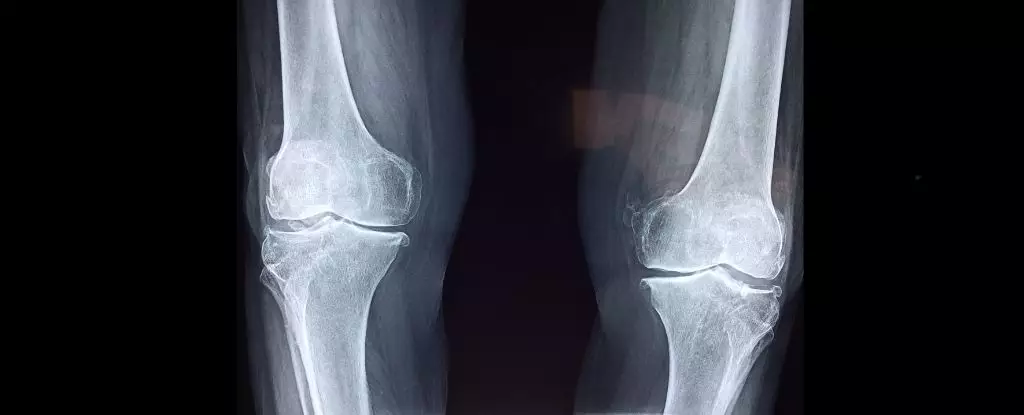Osteoporosis is an often overlooked yet widespread condition characterized by decreased bone density and strength, leading to an increased risk of fractures. Dubbed a “silent disease,” osteoporosis frequently goes undetected until a fracture occurs, resulting in what many experts have labeled as a silent killer. As healthcare providers and specialists emphasize, awareness and proactive measures are critical to combating this bone disease.
According to the National Osteoporosis Foundation, over 10 million Americans currently suffer from osteoporosis, and an alarming 43 million more exhibit low bone mass, a precursor to this debilitating disease. If current trends persist, the number of affected individuals is expected to rise by more than 30% by 2030, reaching a staggering 71 million. This increase can largely be attributed to lifestyle choices such as smoking, insufficient physical activity, and excessive alcohol consumption, in addition to the aging population and a general lack of attention to bone health.
For those grappling with these statistics, it’s essential to note that suffering from osteoporosis is not inevitable. Research indicates that proactive measures can help individuals maintain a healthy bone structure for many years. The beginning of preventive action is recognizing the early signs of bone weakness, which can pave the way to better health outcomes.
One of the most concerning aspects of osteoporosis is its propensity to cause complications through fractures. Every year, osteoporosis is responsible for approximately 9 million fractures globally—roughly one fracture every three seconds. Oftentimes, these fractures can occur due to minor accidents, like falls or bumps, particularly affecting the hips, spine, or wrists.
Individuals may experience certain indicators that alert them to potential bone density loss. Notable signs can include a decrease in height or a noticeable change in posture, which may lead to a hunchback appearance due to a series of compression fractures in the spine. Persistent and chronic back pain can also be a critical symptom, often stemming from spine-related issues. Awareness of these indicators underscores the need for regular screening, especially for at-risk populations.
While osteoporosis cannot be entirely cured, lifestyle modifications, particularly those involving nutrition, can significantly diminish the risk. A cornerstone of bone health is adequate intake of calcium and vitamin D. Calcium is vital for maintaining bone density, while Vitamin D aids in its absorption.
For optimal bone health, it is recommended that women over 50 and men over 70 consume at least 1,200 mg of calcium daily. Dairy products serve as a well-known source of calcium; however, individuals following a vegan diet can attain sufficient calcium from a variety of plant-based foods, including legumes, soy, nuts, and leafy greens. The daily recommendation encompasses two to three servings of calcium-rich foods spaced throughout the day for maximum absorption.
Vitamin D is predominantly acquired through dietary supplements and exposure to sunlight. Just 10 to 30 minutes of exposure to direct sunlight several times a week can be sufficient for the body to generate adequate Vitamin D levels. However, factors such as skin pigmentation and geographic location can affect this light’s efficacy. Hence, individuals may need to adjust their Vitamin D intake accordingly.
Regular physical activity is another crucial component in the fight against osteoporosis. Engaging in weight-bearing exercises—like walking, jogging, or dancing—can contribute to increased bone density, while resistance training enhances muscle strength and balance, further reducing the risk of falls that lead to fractures.
It’s recommended that adults participate in at least 30 minutes of weight-bearing exercise on most days to sustain strong bones. For women, the urgency for physical activity becomes critical during and after menopause, as bone density loss accelerates during these life stages. Concurrently, habits such as smoking cessation and limiting alcohol intake can further strengthen bone health.
As advised by the U.S. Preventive Services Task Force, women should begin osteoporosis screening at age 65, while men should be screened based on risk factors, which include age, lifestyle, and existing chronic health conditions. Diagnostic tests such as bone density scans and spinal X-rays are effective tools in confirming osteoporosis and identifying any resultant compression fractures.
Managing osteoporosis is an ongoing commitment that requires a holistic approach, ranging from awareness of early warning signs to lifestyle modifications. By prioritizing bone health through nutritional strategies, regular exercise, and preventive screenings, individuals can take proactive steps toward safeguarding their overall well-being—ensuring that the threat of osteoporosis remains dormant and unrecognized. Understanding this silent disease is crucial for promoting a healthier future, as awareness can lead to more robust strategies that prevent complications and significantly improve quality of life.

